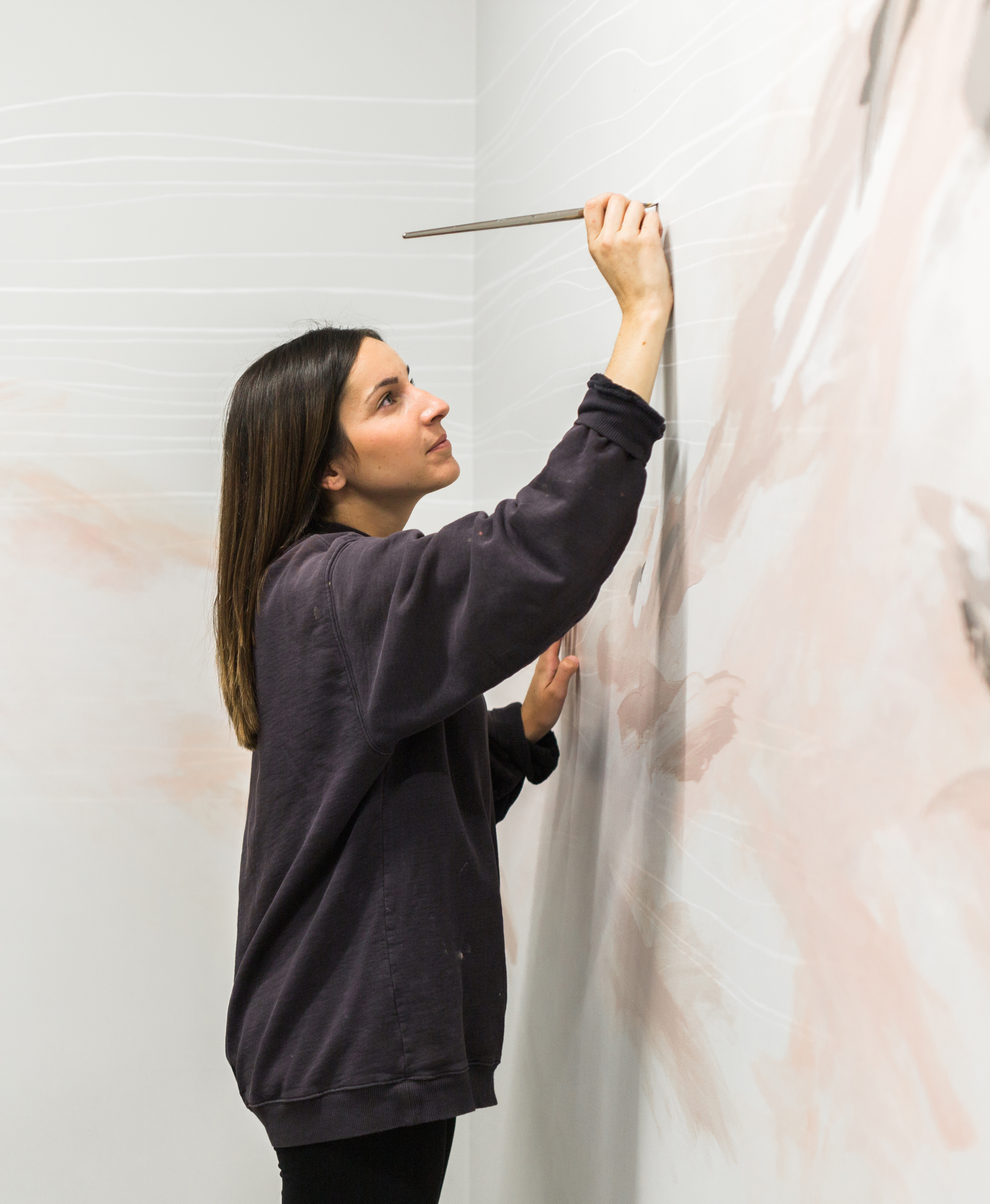Biography
Kelsie Grazier is a contemporary visual artist based near Vancouver, British Columbia. She explores the concept of identity and self through her paintings. Kelsie works primarily with the traditional medium of oil paint on translucent mylar paper. Her art is created through an intuitive process that blends painterly aspects with fluid lines. She studied painting at Emily Carr University of Art and Design, graduating with a Bachelor of Fine Arts. She went on to receive her teaching degree in Secondary Art Education and her Masters in Deaf Education at the University of British Columbia. Kelsie was born with a mild hearing loss but suddenly became deaf at the age of twenty four. Currently, her paintings depict her life experiences becoming Deaf.
Meeting Kelsie Grazier
What is your most memorable experience from your time in the Faculty of Education?
After graduating from Emily Carr University, I went on to complete my Bachelor of Education in Fine Arts and my Masters of Education in Special Education with a concentration in Deaf and Hard of Hearing Education. Both programs were inspiring, challenging and filled with self-reflective personal growth. Those three years of my life held many changes and shaped me to who I am today. I met so many like-minded creatives, passionate about education, and made life lasting friendships. While I had personal hardships, I found an amazing community. I look back on that time of my time warmly because I learned that I am an artist and an academic at heart.
Where has your education from the Faculty of Education taken you in your career?
During my MEd, I unexpectedly became deaf and the impact it had on my life at that time was devastating. I started my career in Early Intervention with deaf and hard of hearing children birth to five years old, but felt I needed to go back to my art studio practice. The experience of losing my hearing forced me re-evaluate my life and that meant intentionally leaving space for creative freedom. I now work part time as a Teacher for the Deaf and Hard of Hearing and part time as a Visual Artist. I feel compelled to continue to paint and use my work as a way to visually process and share my story as a Deaf artist. By talking about deafness and Deaf Culture through my artwork, I can educate in a different way. I have realized, it is important that we share our stories and art can be a powerful way to do that. Maybe I could change the mind of the architect to design Deaf friendly spaces, maybe I could help people realize their content should be closed captioned, or maybe I could help others understand that Deaf Culture and sign language is a valid and important part of a deaf person’s identity before they meet their unborn deaf child. With my art, the viewer has the space to pause, learn or consider their connection to this aural world. I hope to challenge the ideas and assumptions of what deafness is and can be through my paintings.
Where do issues of inclusion find a place in your life or at work?
Over the years I have found the word inclusion has distinctive definitions for different people. No person is alike and it depends on what you need as an individual and being flexible to re-evaluate those needs as time goes on- sometimes even in the same day. I don’t view myself as someone with a disability because I can live my life normally, but differently, as a Deaf woman. However, I encounter situations where disability and inequality is created because of the beliefs within our society. I encourage people to think holistically and with curiosity of how we can accept others’ perceived differences.
Do you have any words of wisdom for current students? Newly graduated folks?
I want to bring attention to the fact that being an educator is a privilege. Your words have power and can have a lasting effect on the person – positive or negative!
